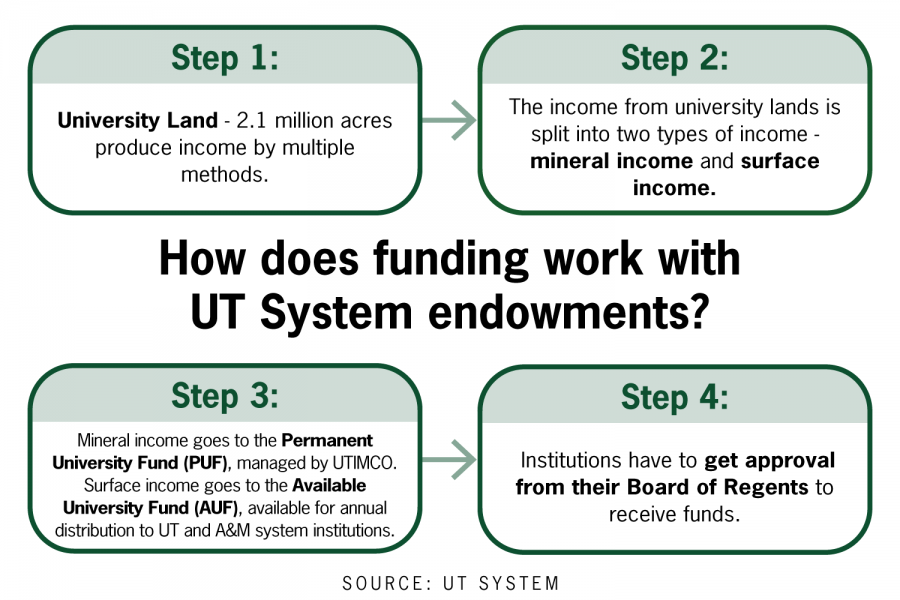Three years after UT System attains second-largest endowment nationwide, system experts break down how money can be spent
May 6, 2021
In 2018, the UT System endowment fund grew to be the second-largest in the country with about $30 billion in funds. Now, UT System experts have broken down how this money is used and collected.
The University of Texas/Texas A&M Investment Management Company manages the UT System’s endowment, which is split among four different funds: the Permanent University Fund, the Permanent Health Fund, the Long Term Fund and the Separately Investment Funds, according to previous reporting by The Daily Texan.
UTIMCO uses the Permanent University Fund, which holds about $28 billion, to reinvest in different companies such as weapons manufacturers to gain more money for the fund. Students have demanded UT-Austin divest from all weapons manufacturers, according to previous reporting by The Daily Texan.
University Lands, a company that manages the natural resources for the 2.1 million acres of UT System land, provides two revenue streams for the Permanent University Fund from items such as oil and gas bonuses, rentals and royalties, and wind power generation. University Lands directed about $800 million in mineral revenue in the fiscal year 2020 to the Permanent University Fund.
Joe Quoyeser, interim chief executive officer of University Lands, said the company is generating the most income from oil and gas than it ever has.
Surface income, which is money that comes from items such as wind power and other resources on the land, and an annual distribution from the total return on Permanent University Fund investment goes into the Available University Fund. Money from the Available University Fund can then be used for system needs such as construction for UT System institutions or student aid for UT-Austin.
The Texas Constitution allows other UT System schools to spend their endowment money primarily on capital projects. But UT-Austin has greater freedom to “fund excellence,” which allows money to aid students, said Scott Kelley, executive vice chancellor for business affairs of the UT System.
In extraordinary circumstances, UT-Austin can also take money from the Permanent University Fund, Kelley said.
Other funds include the Permanent Health Fund, which the system uses to benefit its health-related institutions of higher education, such as The University of Texas MD Anderson Cancer Center.
The Separately Invested Fund consists of private endowments and charitable trusts, according to the UTIMCO website. The separately invested endowments support UT System institutions.
Donors can set up philanthropic endowments with individual institutions, which are held in the Long Term Fund. Randa Safady, the vice chancellor for external relations, communications and advancement services, said the donors’ money is never spent, but is reinvested by UTIMCO. The return on those investments are then distributed to a cause the donor marks the money for, Safady said.












